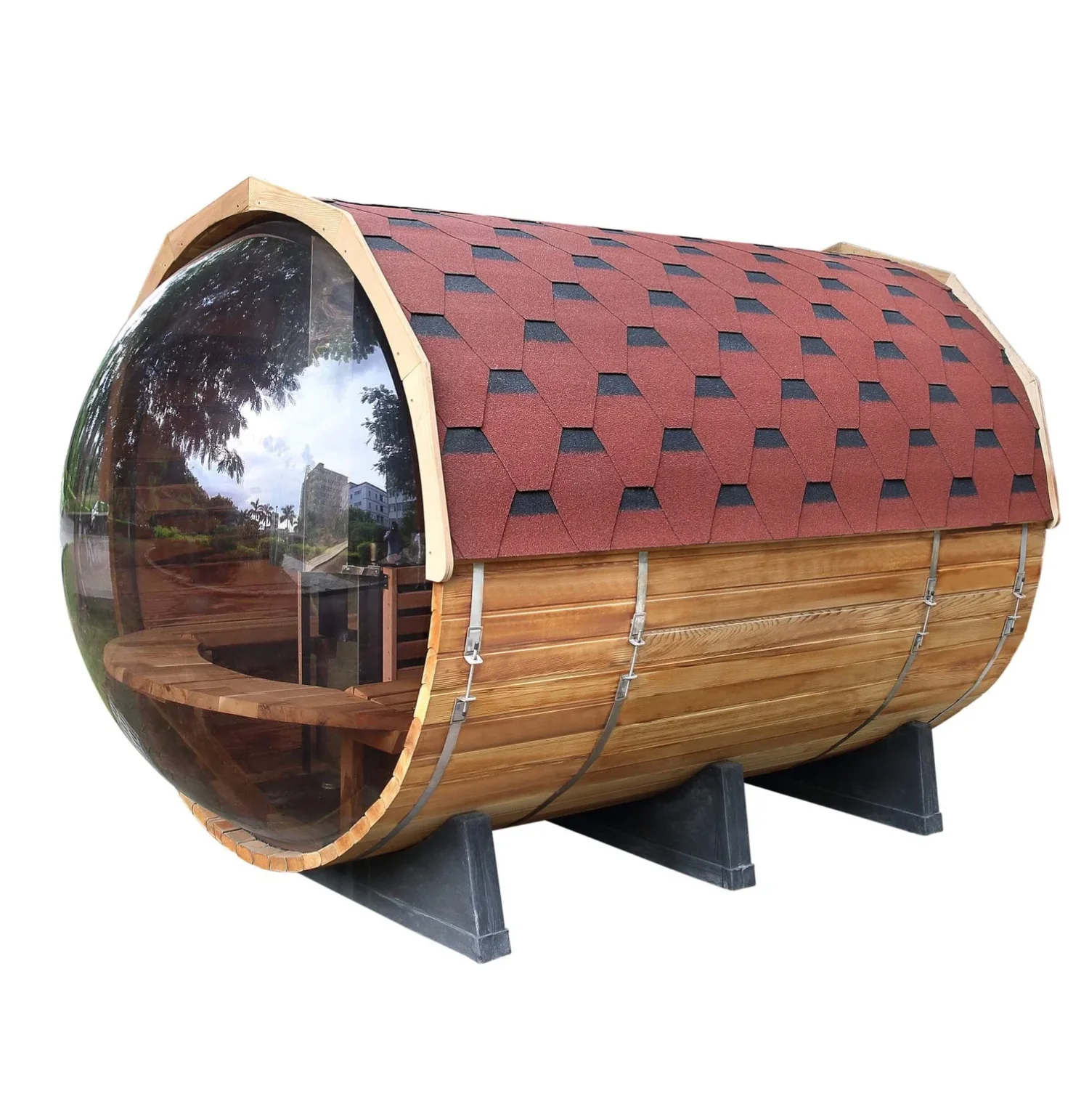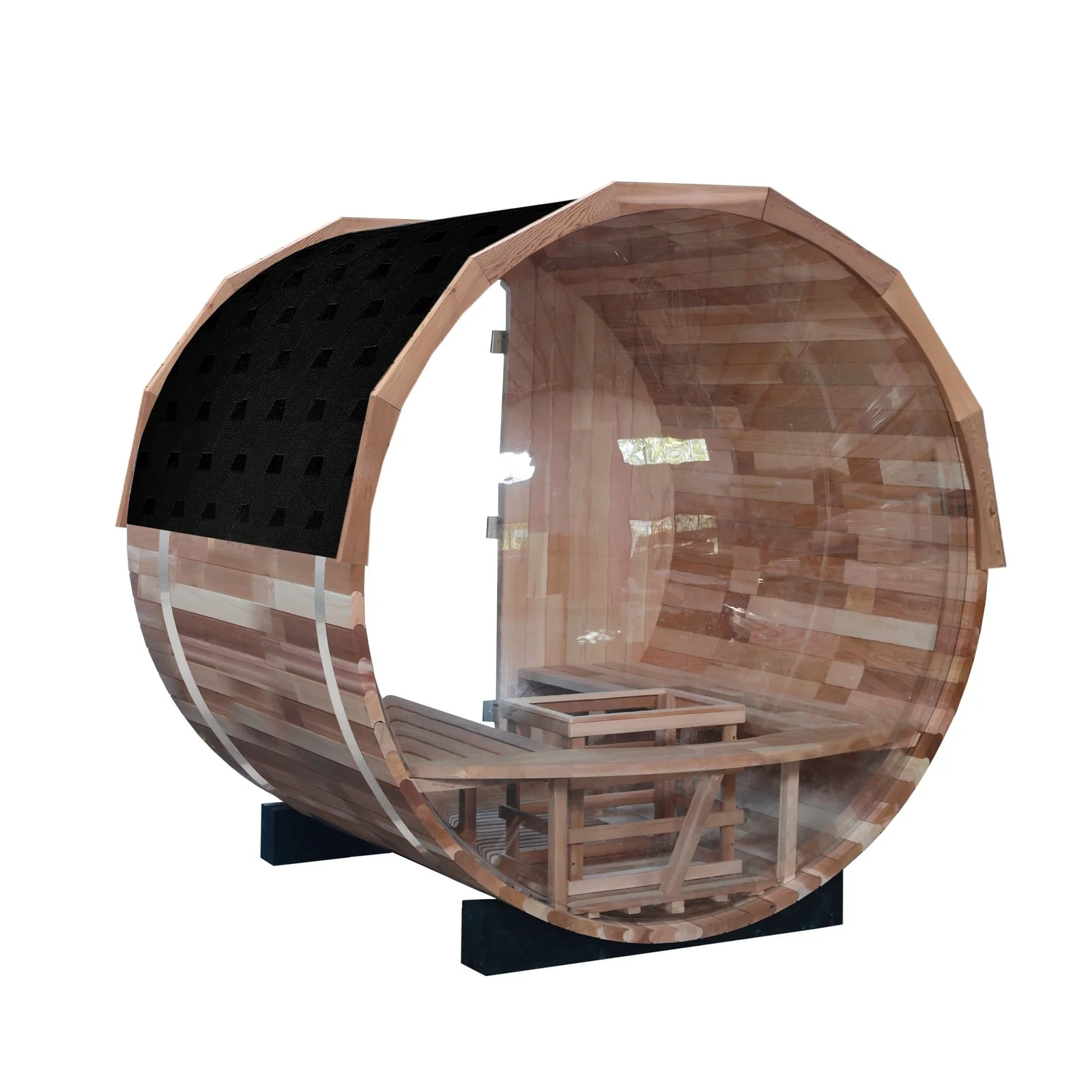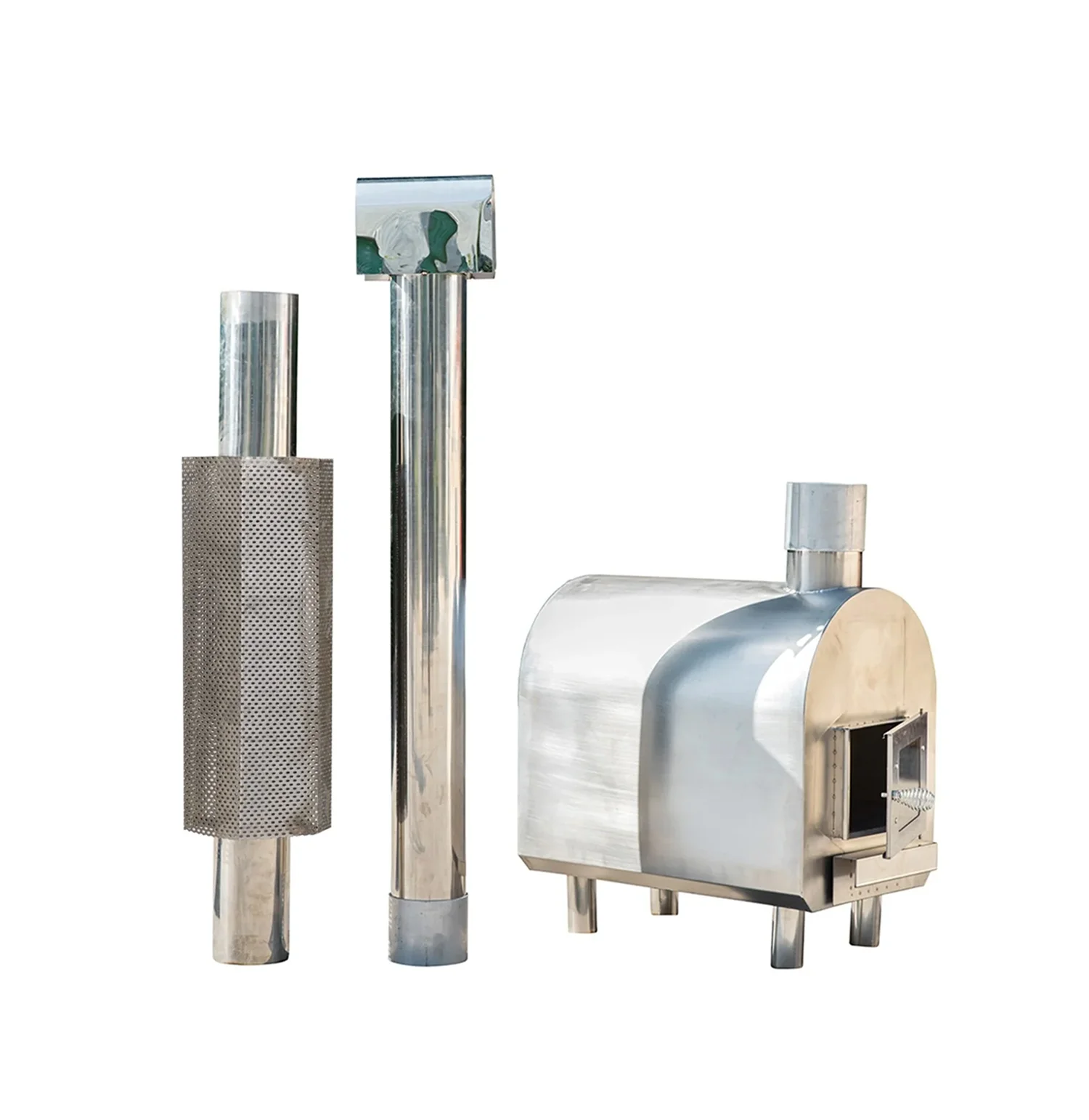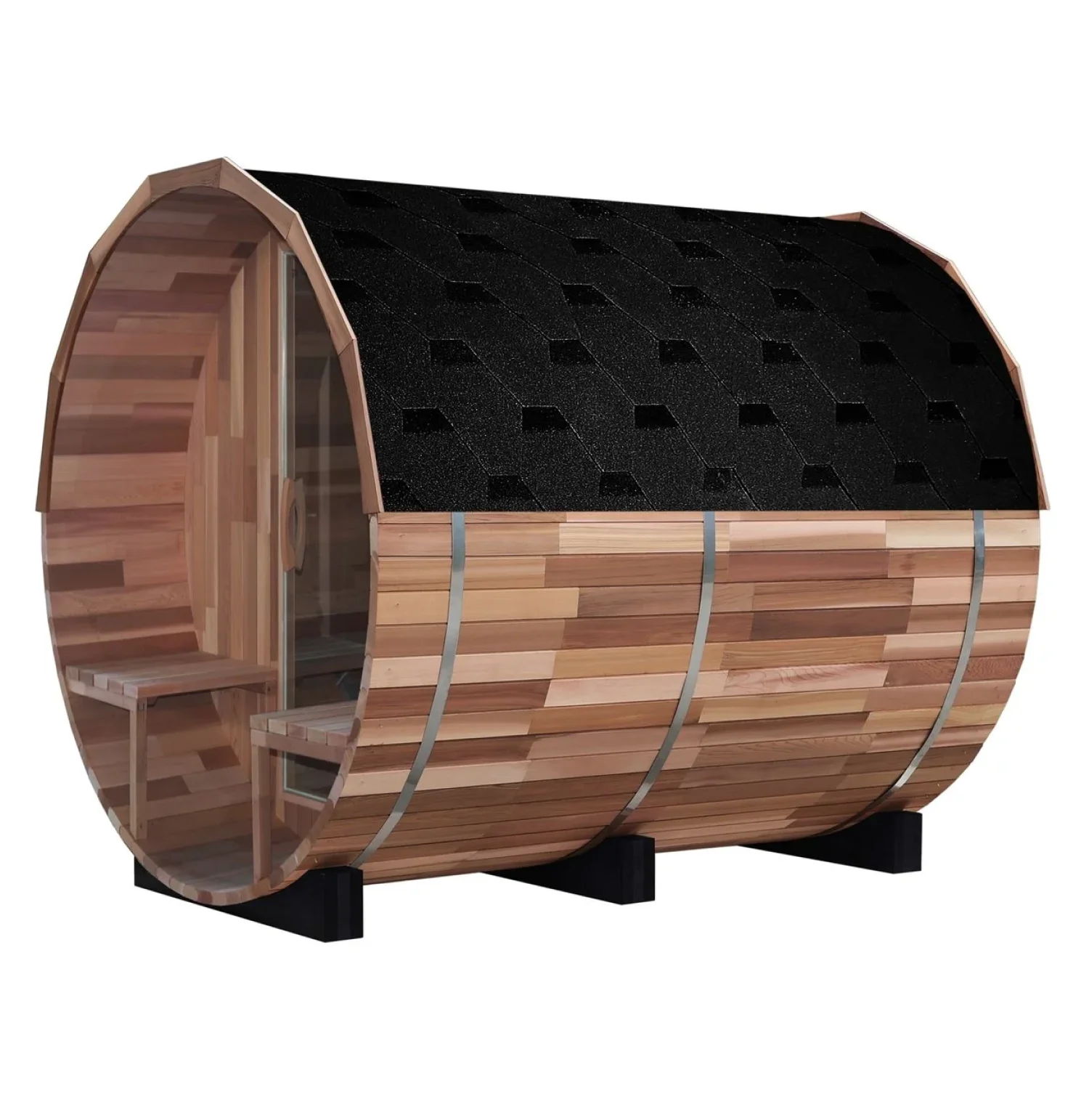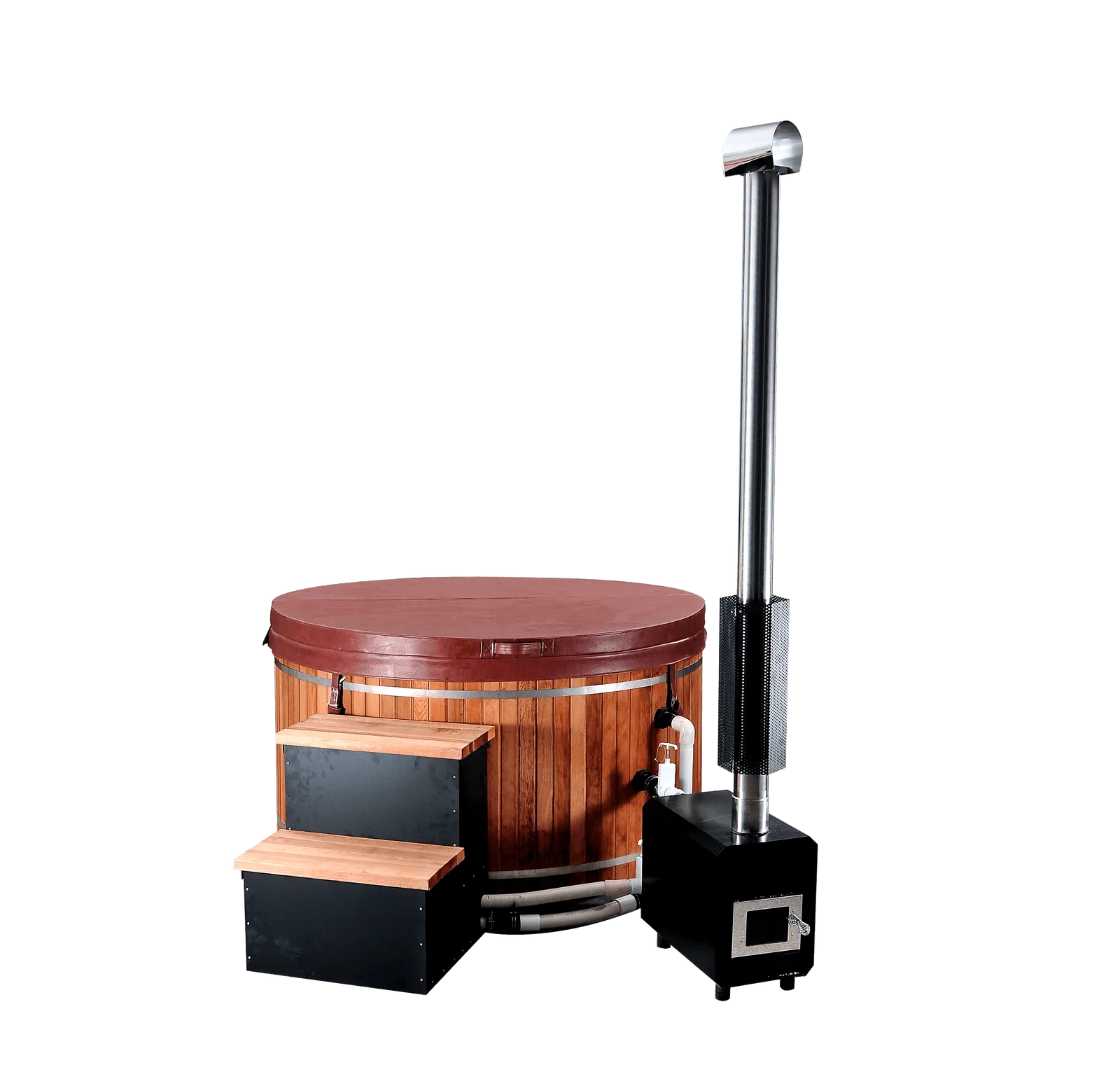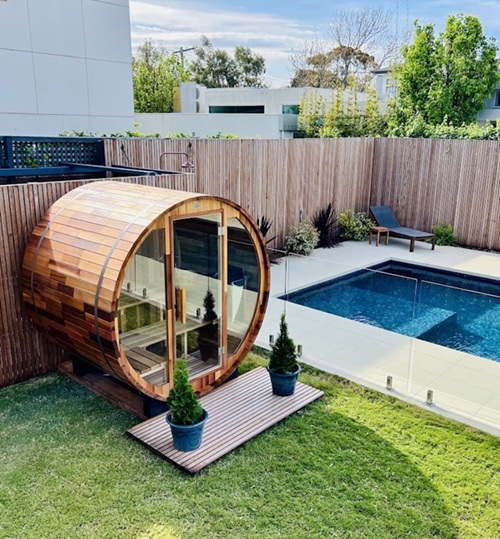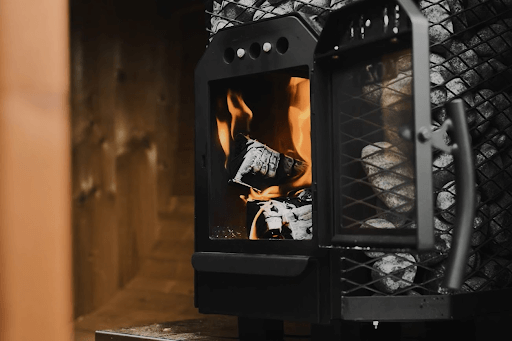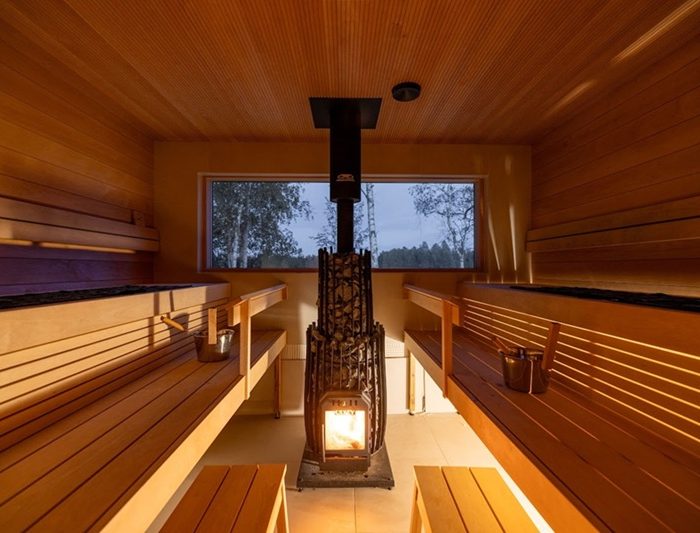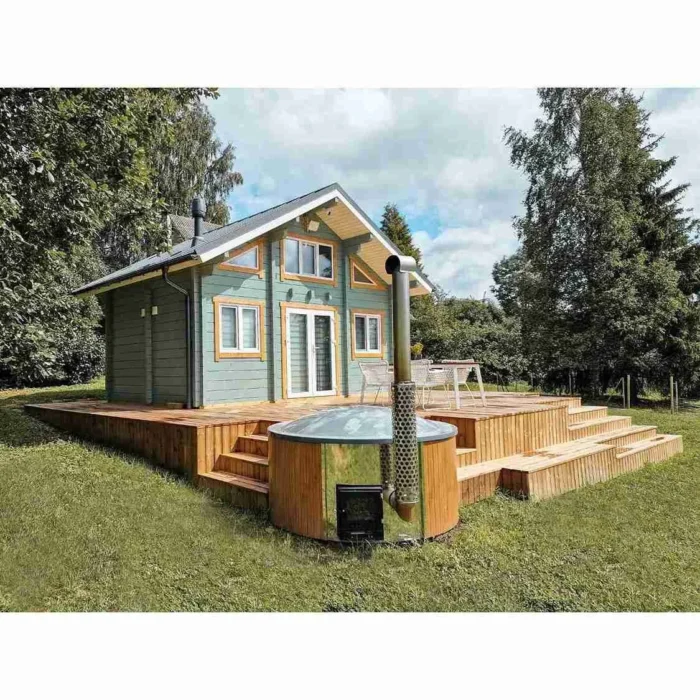The gentle hiss of water meeting hot sauna stones – known as löyly in Finnish sauna tradition – transforms dry heat into a soothing cloud of steam. This ritual plays a central role in sauna culture, yet many newcomers are unsure how much water to pour. Pour too little and you won’t feel the humidity; pour too much and you risk cooling the rocks, damaging the heater or scalding yourself.
In this guide we explain how to pour water on sauna rocks safely, drawing on advice from heater manufacturers and experienced bathers. We’ll keep things warm and welcoming, just as you’d expect from a family‑centric sauna supplier – Shym Saunas.
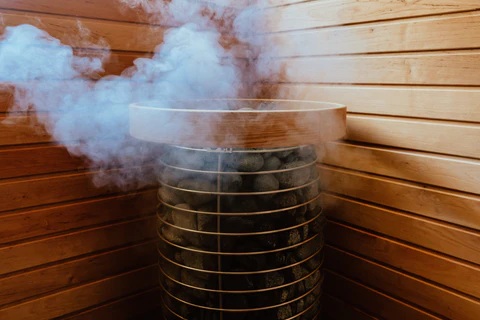
Key takeaways
- Only pour small amounts of water – about 80 ml (a ladleful) – onto hot rocks at a time, letting them dry between pours. Too much water cools the stones and can cause damage.
- Use hot, clean water. Warm water prevents thermal shock and protects the stones; avoid cold or hard water.
- Pour gently and gradually. A wooden ladle helps you control the flow, reducing sudden bursts of steam and preventing burns.
- Respect heater instructions and etiquette. Some electric heaters are dry‑only, and always ask fellow bathers before adding water. The aim is to enhance humidity (löyly), not to raise the temperature
Understanding löyly and why water matters
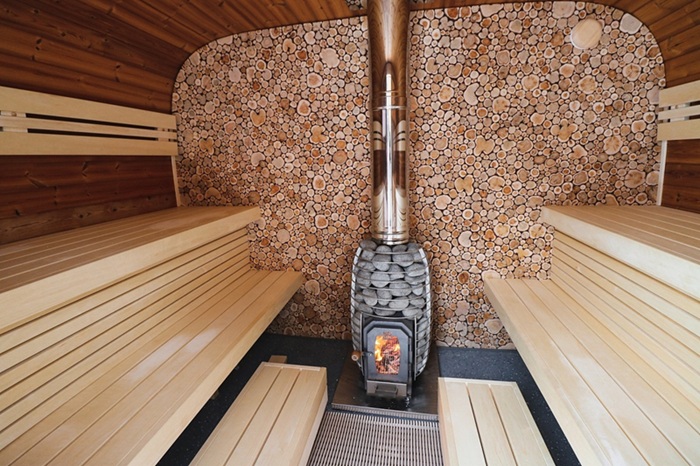
Sauna rooms heat the air to high temperatures, drying it out. Adding water to the stones raises humidity and intensifies the feeling of warmth, making the session more comfortable.
Traditional saunas are designed for this: rocks act as a thermal mass, converting heat into steam when water is added. The sensation of increased heat is due to the steam transferring heat to your skin, not because the actual temperature rises. Electric “dry‑only” saunas and infrared cabins often prohibit water; always check the manufacturer’s guidance before adding water.
How much water should you pour?
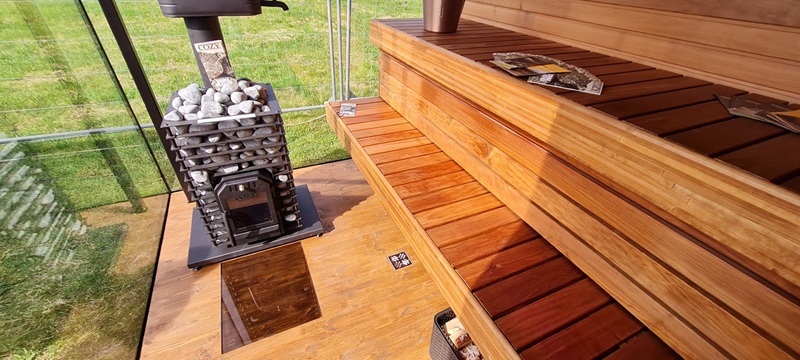
Start small—about 80 ml at a time
HUUM, a respected sauna heater manufacturer, recommends throwing roughly 80 ml of water (about a ladleful) onto the stones. Wait a few minutes to let the stones dry and regain heat before adding more. This approach prevents water from pooling at the bottom of the heater—a sign you’ve poured too much or the stones aren’t hot enough.
Sauna Times echoes this advice: start with a little water, then add more as desired. Pouring a whole litre at once is possible but is usually considered a macho stunt best left to seasoned bathers.
Use warm, clean water
Water quality matters. HUUM advises using clean, warm tap water to avoid thermal shock that could crack stones. Hard water or water with high iron content can leave deposits on the heater and should be avoided. Supreme Saunas notes that pouring room‑temperature water gradually creates steam without overly cooling the rocks. Cold water delivers a dramatic burst of steam but should be used sparingly to prevent damage.
Gentle and gradual pouring
Instead of dumping water, pour slowly with a ladle to control the flow. Use a wooden ladle and bucket and keeping the amount moderate.
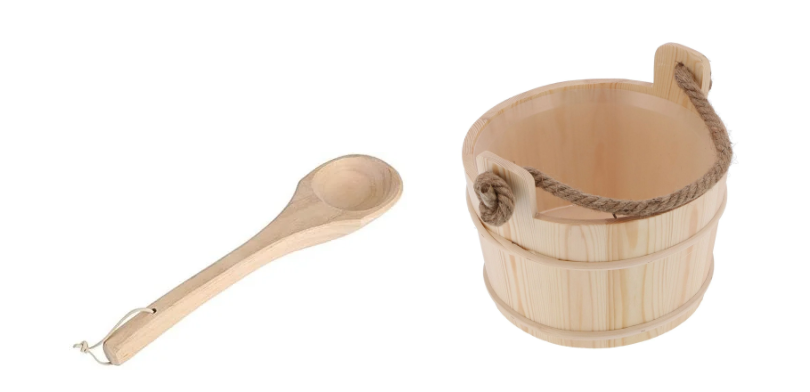
Gradual pouring prevents sudden bursts of steam that could cause burns and reduces the risk of cracking the rocks or overloading the heater.
As Artem Filipovskiy, from Shym Saunas, highlights as an important point, “if the water starts to come out underneath the heater, then you’re pouring too much water.” After each pour, wait for the gentle hiss to subside before adding more.
Let the stones heat thoroughly before adding water
For water to vaporise quickly, the stones must be fully heated. Stones need to be hot enough for complete vaporisation of the water. To test readiness, throw a small amount of water: if it evaporates immediately, you’re good to go. If water trickles down the heater, allow more heating time.
Safety considerations and common mistakes
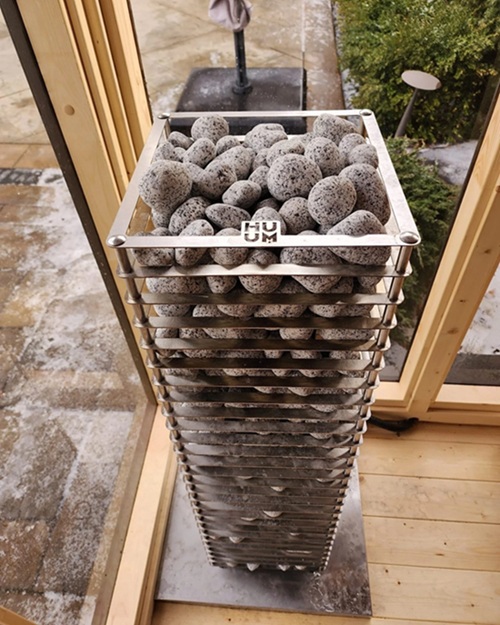
Photo Source: Shym Saunas
- Avoid over‑watering. Excessive water cools the rocks, making them less effective and potentially damaging them. In extreme cases, water can seep onto the heater’s elements, causing short circuits.
- Never pour water on an unapproved heater. Infrared cabins and some electric heaters are designed for dry use; adding water could be hazardous. Always read the manufacturer’s instructions.
- Don’t use cold water excessively. Sudden temperature changes can cause thermal shock, cracking the rocks. Warm water reduces this risk.
- Use proper tools. Employ a wooden ladle and bucket to control flow and avoid burns. Keep children away from the heater when adding water.
- Maintain good ventilation. Adequate air exchange disperses excess humidity and prevents mould.
Factors influencing water usage
Size of the sauna and mass of stones
A large sauna with plenty of rocks can tolerate slightly more water than a small unit. Wood‑burning stoves often have bigger rock chambers and recover heat faster than compact electric heaters. Always follow the stove’s specifications for rock volume and maximum water load.
Type of heater
Wood‑burning and traditional electric heaters are designed to accept water. Infrared saunas and some commercial units forbid water entirely. If you’re using a Shym Saunas barrel with a wood stove, feel free to enjoy löyly; if you’ve purchased one of our infrared blankets, skip the water and focus on dry heat.
Personal preference and humidity
Finns often debate the “right” amount of steam. Start with a ladle and build from there until you find your ideal humidity. Remember that steam intensity is subjective—always respect fellow bathers in a communal space and ask before adding water.
Additional enhancements
Aromatherapy and essential oils
For a spa‑like experience, mix a few drops of essential oil with water in your sauna bucket. Lavender or chamomile for relaxation, or eucalyptus for respiratory relief. Never pour oil directly onto the rocks; dilute it in water to release the scent gradually.
Sauna etiquette
When sharing a sauna, follow local customs. In Australia many gyms prohibit water on electric heaters—look for signs and respect them. Always use a towel to sit on, drink plenty of water before and after your session and listen to your body. Limit each round to 10–20 minutes and take breaks to cool down, as recommended by wellness guides.
Products to enhance your löyly experience
- Shym Sauna Bucket and Ladle – crafted from natural wood with a durable liner, this set lets you pour controlled amounts of water onto your sauna rocks and explore the art of löyly safely.
- Thermowood Barrel Sauna – our thermotreated Nordic spruce barrel sauna comes with high‑capacity stones to deliver satisfying steam when water is added, offering durable and efficient heat for families.
Wrapping Up
Mastering the art of löyly is about balance and respect—for the heater, the rocks and the people sharing your sauna. Use small amounts of warm water, pour gently and let the stones recover between ladles to create pleasant humidity without causing damage. Whether you’re enjoying a Shym Saunas barrel sauna in your backyard or a community sauna at your gym, these simple guidelines will help you cultivate a ritual that nurtures both body and soul. Breathe deeply, pour mindfully and enjoy the quiet luxury of steam.

